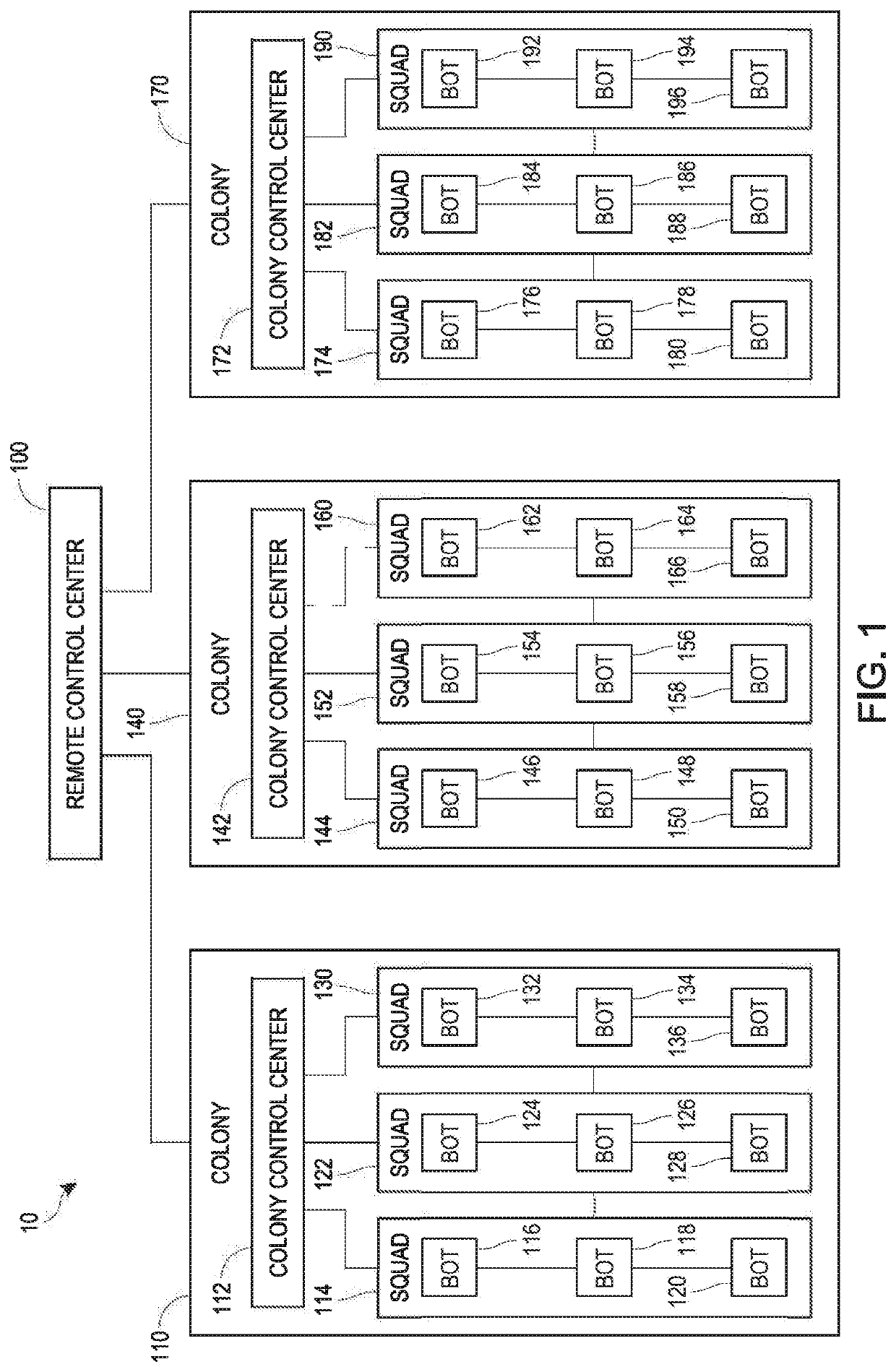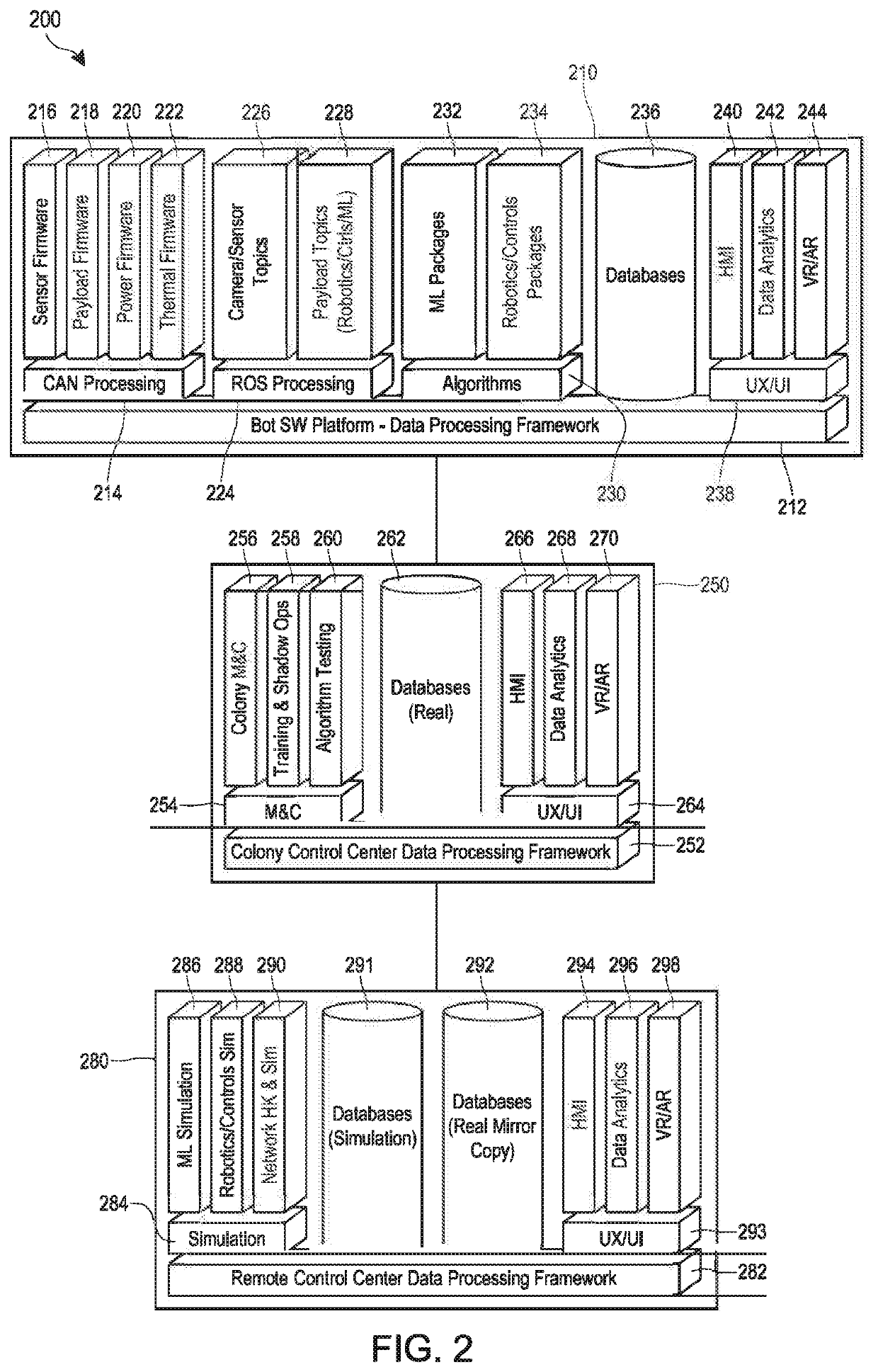Systems and methods for industrial robotics
a robotics and industrial technology, applied in the field of industrial robotics, can solve the problems of high degree of human involvement, frequent repair of existing solutions for performing industrial tasks, inefficient and expensive, etc., and achieve the effects of convenient construction, easy integration, and speed up the ability
- Summary
- Abstract
- Description
- Claims
- Application Information
AI Technical Summary
Benefits of technology
Problems solved by technology
Method used
Image
Examples
Embodiment Construction
” one will understand how the features of the embodiments described herein provide advantages over existing approaches to industrial robotics.
[0005]Systems and methods for industrial robotic system platforms are described. A colony of robots may operate autonomously as individual units and in varying degrees of collaboration with surrounding robots. The robots may be organized in squads or groups of robots, which in turn may be organized and grouped in platoons, forming the overall colony hierarchical structure. A control center communicates with the colony of robots to enable human monitoring and operational exception management, however the control center may not nominally or actively tele-operate the colony. Software at the control center, platoon, squad, and robot levels may analyze various data related to the platform and the external environment for monitoring, communication, and control of the various systems. Artificial intelligence, such as machine learning, may be implemen...
PUM
 Login to View More
Login to View More Abstract
Description
Claims
Application Information
 Login to View More
Login to View More - R&D
- Intellectual Property
- Life Sciences
- Materials
- Tech Scout
- Unparalleled Data Quality
- Higher Quality Content
- 60% Fewer Hallucinations
Browse by: Latest US Patents, China's latest patents, Technical Efficacy Thesaurus, Application Domain, Technology Topic, Popular Technical Reports.
© 2025 PatSnap. All rights reserved.Legal|Privacy policy|Modern Slavery Act Transparency Statement|Sitemap|About US| Contact US: help@patsnap.com



